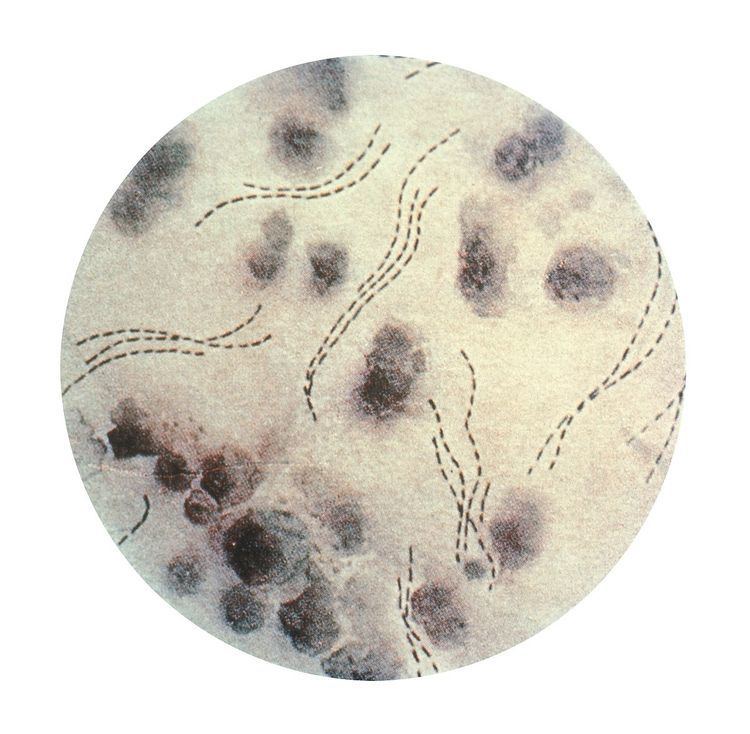Phylum Proteobacteria Rank Species | Scientific name Haemophilus ducreyi Higher classification Haemophilus Order Pasteurellaceae | |
 | ||
Similar Haemophilus, Bacteria, Haemophilus parainfluenzae, Neisseria, Moraxella | ||
Chancroide haemophilus ducreyi
Haemophilus ducreyi is a fastidious gram-negative coccobacillus bacteria, which causes the sexually transmitted disease chancroid, a major cause of genital ulceration in developing countries characterized by painful sores on the genitalia. Chancroid starts as an erythematous papular lesion that breaks down into a painful bleeding ulcer with a necrotic base and ragged edge.
Contents
H. ducreyi can be cultured on chocolate agar. It is best treated with a macrolide like azithromycin and a third-generation cephalosporin like ceftriaxone. H. ducreyi gram stain appears as "school of fish."
Pathogenesis
H. ducreyi is an opportunistic microorganism that infects its host by way of breaks in the skin or epidermis. Inflammation then takes place as the area of infection is inundated with lymphocytes, macrophages, and granulocytes. This pyrogenic inflammation causes regional lymphadenitis in the sexually transmitted bacillus chancroid.
Diagnosis
Although antigen detection, serology, and genetic amplification methods are sometimes used to diagnose infections with H. ducreyi and the genetic tests have greater sensitivity, they are not widely available, so cultures are currently considered the "gold standard" test.
